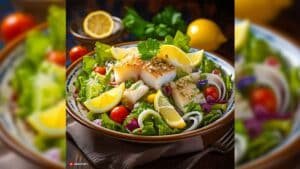Introduction
Welcome to our guide on Brinjals, a versatile vegetable commonly used in many dishes around the world. In this article, we will provide you with comprehensive information on Brinjals, including its history, nutritional value, culinary uses, and much more. Our goal is to provide you with the best possible information, so you can make informed decisions when cooking with Brinjals.

What are Brinjals?
Brinjals, also known as eggplants or aubergines, are a member of the nightshade family of vegetables. They are characterized by their glossy, deep purple skin and spongy flesh. Brinjals are widely used in many cuisines around the world, including Indian, Mediterranean, and Middle Eastern cuisine. They are a versatile vegetable that can be cooked in many ways, from grilling to roasting, frying to sautéing.
History of Brinjals
Brinjals have a long history dating back to ancient times. They were first cultivated in India and were then introduced to other parts of the world, such as Europe and the Middle East. Brinjals were brought to Europe by the Arabs during the Middle Ages and were initially grown for their ornamental value.
It was only later that people began to realize their culinary potential. Today, Brinjals are widely cultivated around the world and are an important ingredient in many dishes.
Nutritional Value of Brinjals
Brinjals are low in calories and high in nutrients, making them an excellent addition to any diet. They are a good source of fiber, which promotes digestive health, and are also rich in antioxidants, which protect the body from harmful free radicals. Brinjals are also a good source of vitamins and minerals, including vitamin C, vitamin K, and potassium.
Culinary Uses of Brinjals
Brinjals are a versatile vegetable that can be used in many dishes. They are commonly used in Indian and Middle Eastern cuisine and are an essential ingredient in classic dishes such as baba ganoush and moussaka. They can
be grilled, roasted, fried, or sautéed, and their spongy texture makes them ideal for absorbing flavors and spices. Brinjals can also be stuffed with various fillings, such as rice, meat, or cheese, for a hearty and flavorful meal.
How to Select and Store Brinjals
When selecting Brinjals, look for firm, shiny skins and avoid any that have soft spots or blemishes. They should also feel heavy for their size, indicating that they are fresh and ripe. Store them in a cool, dry place, away from direct sunlight. They can be stored for up to a week if kept in a well-ventilated area. Once cut, wrap the remaining Brinjal in plastic wrap and store it in the refrigerator for up to two days.
Conclusion
In conclusion, Brinjals are a versatile and delicious vegetable that is worth exploring in the kitchen. They are low in calories, high in nutrients, and have a unique flavor that adds depth to any dish. Whether you’re using them in a classic Indian recipe or experimenting with new flavors, Brinjals are an excellent addition to any kitchen. We hope this guide has been helpful in providing you with the information you need to cook with Brinjals confidently.







